II) Electron-Impact Excitation out of the ground state of Atoms
D. Pressure Effects
Collision Transfer
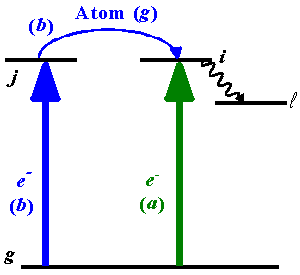 Let us again consider excitation into level-i (for simplicity we will neglect
cascades and radiation trapping). We now consider two possible paths for populating
level-i.
Let us again consider excitation into level-i (for simplicity we will neglect
cascades and radiation trapping). We now consider two possible paths for populating
level-i.
| (a) | Direct: Atom(g) + e- --> Atom(i)
n(i) proportional to n(g) proportional to P |
| (b) | Collision Transfer:
Atom(g) + e- --> Atom(j) Atom(j) + Atom(g) --> Atom(i) + Atom(g) n(i) proportional to n(j) n(g) proportional to P2 |
Where the two levels i and j must have energies within kT of one another. Note in particular that the two step collision transfer mechanism is proportional to P2, so it is more important at high pressure.
In general, both processes will be at work. If we look at the total effect:
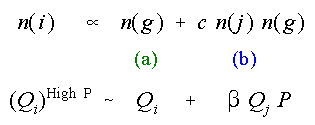
At low pressures the collision transfer term (b) approaches zero, and the measured cross section is independent of pressure- the direct Qi term (a). At higher pressures, the measured cross section has a component linear with pressure. If Qi and Qj have different energy dependence (different shapes of excitation functions), the shape of (Qi)High P would change with pressure.
- Collision Transfer Mechanism for He 33D
| 1.7 mTorr | 33 mTorr | 130 mTorr |
|---|---|---|
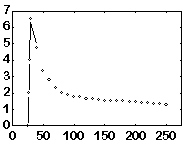 |
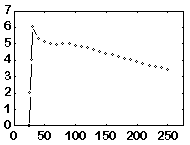 |
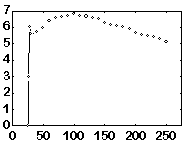 |
| 33D Cross section (in arbitrary units) versus Electron energy (in eV). | ||
| Click here to see a little animated movie of the 33D excitation function at different pressures. |
Recall that in the absence of collision transfer (i.e. at low pressures) we saw that
| Level | Shape of Excitation Function |
|---|---|
| Q for n3L | narrow peak near threshold |
| Q for n1P | broad peak at 100 eV |
| Q for n1S, n1D | intermediate (peak at 50 eV) |
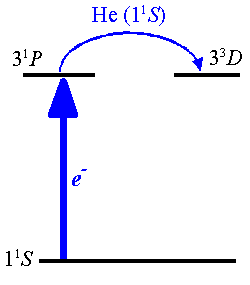 This suggests that there is some collision transfer between the n1P levels and
the 33D level that would cause the 33D level to exhibit the
n1P's broad peak. Consider the particular case of collision transfer
from the 31P.
This suggests that there is some collision transfer between the n1P levels and
the 33D level that would cause the 33D level to exhibit the
n1P's broad peak. Consider the particular case of collision transfer
from the 31P.
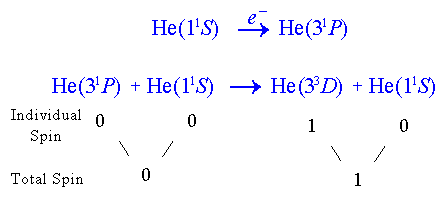
Note, however, that the total spin before the collision transfer process is not equal to the total spin after the collision. This violates Wigner's Spin Rule, and is thus very unlikely to happen.
| Wigner's Spin Rule: Total spin must be conserved for collision between atoms that conform to the LS-coupling. |
- Mixed F collision transfer
| Yes | for | S, P, D | (l = 0,1,2) |
| No | for | F | ( l >= 3) |
So (1s)(nf ) n1F & n3F not valid descriptions. We should instead express the nF levels as a mixture:

The nF levels can act as a bridge for transfer from singlet to triplet levels, without violating the Wigner Spin Rule. Collision transfer can occur between the n1P levels and the mixed nF levels. The nF levels can then cascade down into the 33D level.
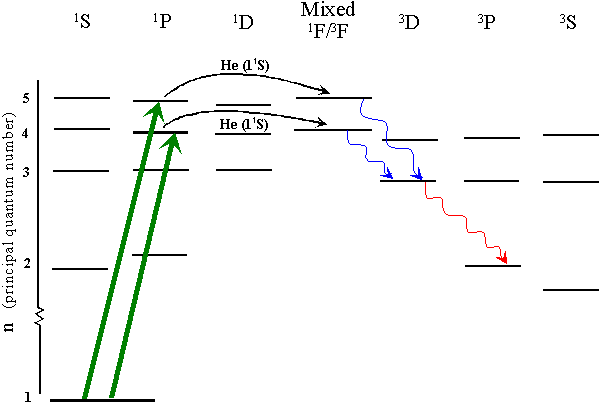
| He(11S) + e- | --> He(n1P) |
| |
|
| He(n1P) + He(11S) | --> He(nF) + He(11S) |
| |
|
| He(nF) | --> He(33D) + hv |
| --> He(31D) + hv |
Since the 5F-->33D transition lies in the infared, until recently it has not been measured directly. Using a near-infared weak emission Fourier Transform Spectrometer, we have recently measured it and it too shows the expected pressure effects.
| 3 mTorr | 10 mTorr | 50 mTorr |
|---|---|---|
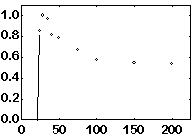 |
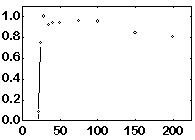 |
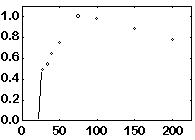 |
| 5F Cross section (in arbitrary units) versus Electron energy (in eV). | ||
references:
Theory of Collision Transfer of Excitation in Helium Chun C. Lin, and Richard G. Fowler, Annal of Physics 15 (1961) 461-469.
Collisional Excitation Transfer to the 41D State in Helium by Multiple State Mechanism Chun C. Lin, and Robert M. St. John, Physical Review 128 (1962) 1749-1753.
Electron-impact excitation and collisional transfer into the nF levels of helium J. Ethan Chilton and Chun C. Lin, Phys Rev. A 58 (1998) 4572-4580.
 |
 |
 |